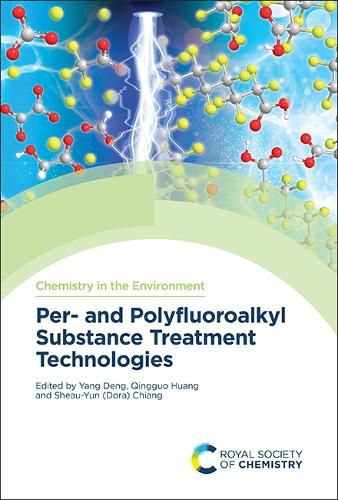Readings Newsletter
Become a Readings Member to make your shopping experience even easier.
Sign in or sign up for free!
You’re not far away from qualifying for FREE standard shipping within Australia
You’ve qualified for FREE standard shipping within Australia
The cart is loading…






Per- and Polyfluoroalkyl Substances (PFAS) are an emerging class of persistent organic pollutants. Although their thermal/chemical stability and water/stain repellence enable their widespread use in various products, such as personal care products, food packaging and firefighting foams, these properties also make them particularly resistant to degradation. This unwelcome persistence, with their trace concentrations, environmental prevalence, bioaccumulation and probable toxicities, poses a potential threat to environmental and human health. As such, much work is directed to finding ways to efficiently abate PFAS in the environment.
Per- and Polyfluoroalkyl Substance Treatment Technologies provides a thorough review of the current state of research in treatment technologies for removing PFAS from the environment, particularly water. Beginning with a brief introduction to PFAS challenges and research needs, it covers established and promising technologies for PFAS removal from drinking water, wastewater, and groundwater. This is a great book for environmental engineers, environmental chemists, and industrialists interested in pollution remediation.
$9.00 standard shipping within Australia
FREE standard shipping within Australia for orders over $100.00
Express & International shipping calculated at checkout
Per- and Polyfluoroalkyl Substances (PFAS) are an emerging class of persistent organic pollutants. Although their thermal/chemical stability and water/stain repellence enable their widespread use in various products, such as personal care products, food packaging and firefighting foams, these properties also make them particularly resistant to degradation. This unwelcome persistence, with their trace concentrations, environmental prevalence, bioaccumulation and probable toxicities, poses a potential threat to environmental and human health. As such, much work is directed to finding ways to efficiently abate PFAS in the environment.
Per- and Polyfluoroalkyl Substance Treatment Technologies provides a thorough review of the current state of research in treatment technologies for removing PFAS from the environment, particularly water. Beginning with a brief introduction to PFAS challenges and research needs, it covers established and promising technologies for PFAS removal from drinking water, wastewater, and groundwater. This is a great book for environmental engineers, environmental chemists, and industrialists interested in pollution remediation.